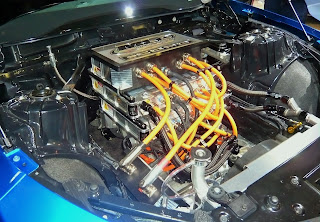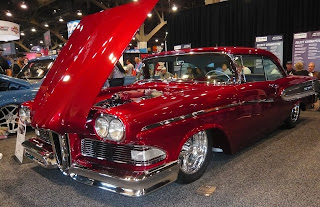What if Group 7 racing still existed?
Today, we are are going to step outside of our
usual features and consider "what if?"
The 1966 Fédération Internationale de l'Automobile (FIA) Yearbook from the group that governed international racing included Appendix 'J 'which contained new regulations
for new category Group 7 two-seater racing cars.
The rules for the Group 7 were simple:
• Design must be capable of accepting a passenger.
• Enclosed bodywork with no restriction on aerodynamics.
• Unrestricted engine capacity with turbocharging or
supercharging allowed with the use of commercially available fuel.
• No minimum weight and no forbidden materials.
• General safety standards of the era required.
In North America, the Sports Car Club of America (SCCA)
created the SC Johnson Wax Canadian-American (Can-Am) Challenge Cup series for
Group 7 race cars, that saw some of the most outrageous race cars ever created.
The design of Group 7 cars were only limited by the designers' imaginations, but all Group 7 cars shared one thing in common - they were loud and fast.
Photo of the Chaparral 2J courtesy of the Petroleum Museum
Texan Jim Hall’s Chaparral series of cars were ground-breaking - first with with giant rear driver adjustable wings,
which were banned in by revised FIA regulations in 1969. Later the Chaparral
2J in 1970 was equipped with sliding side skirts and fans that sucked air from
underneath the car and pulled it onto the ground, a concept which was quickly outlawed.
Photos of the Porsche 917/30 by the author
In 1972, Penske Racing and the Porsche factory debuted a new
Can-Am challenger - the 917/10, equipped with a twin turbocharged flat 12-cylinder 327 cubic inch engine and advanced aerodynamics followed the next year by the 917/30 with an engine said to produce
over 1200 horsepower coupled with 820 ft/lbs of torque.
The Penske
Porsches broke the five-year stranglehold of Team McLaren, and for 1974, the
SCCA introduced fuel economy standards which eventually killed the Can-Am series. More many years, the Porsche 917 has been unfairly blamed as "the car that killed the Can-AM series."
Photos of the Chaparral 2X by the author
So, dear reader, I ask you to consider this proposition-
what if FIA had not discontinued the Group 7 category in 1975? What would a
modern Group 7 car be like? Would they resemble the Chevrolet Chaparral 2X
concept seen at the 2016 SEMA (Specialty Equipment Market Association) show? Had Group 7 continued, what powerplants would have been developed and what exotic materials might be used to build a modern group 7 race cars?
electric?
hybrid?
steam?
turbine?
jet?
natural gas?
4-wheel drive?
It's sure fun to think about!





































